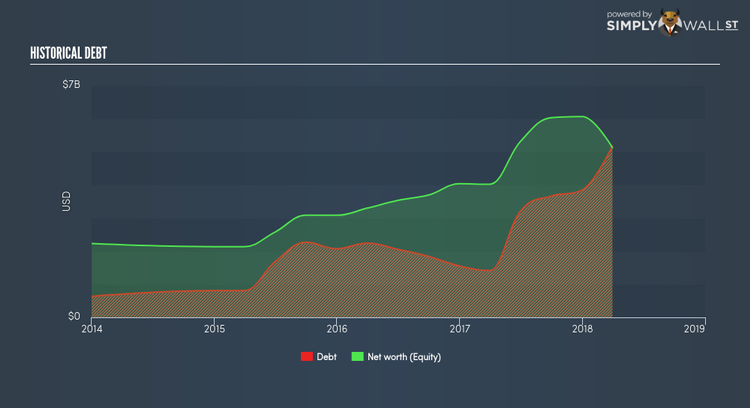Does Brookfield Business Partners LP.’s (NYSE:BBU) Debt Level Pose A Problem?

Mid-caps stocks, like Brookfield Business Partners LP. (NYSE:BBU) with a market capitalization of US$5.23B, aren’t the focus of most investors who prefer to direct their investments towards either large-cap or small-cap stocks. While they are less talked about as an investment category, mid-cap risk-adjusted returns have generally been better than more commonly focused stocks that fall into the small- or large-cap categories. This article will examine BBU’s financial liquidity and debt levels to get an idea of whether the company can deal with cyclical downturns and maintain funds to accommodate strategic spending for future growth. Note that this commentary is very high-level and solely focused on financial health, so I suggest you dig deeper yourself into BBU here. See our latest analysis for Brookfield Business Partners
How does BBU’s operating cash flow stack up against its debt?
Over the past year, BBU has ramped up its debt from US$1.55B to US$3.85B , which is made up of current and long term debt. With this growth in debt, the current cash and short-term investment levels stands at US$1.31B for investing into the business. Additionally, BBU has generated cash from operations of US$290.00M over the same time period, resulting in an operating cash to total debt ratio of 7.54%, signalling that BBU’s operating cash is not sufficient to cover its debt. This ratio can also be interpreted as a measure of efficiency for loss making businesses as traditional metrics such as return on asset (ROA) requires a positive net income. In BBU’s case, it is able to generate 0.075x cash from its debt capital.
Can BBU pay its short-term liabilities?
At the current liabilities level of US$5.69B liabilities, it seems that the business has been able to meet these commitments with a current assets level of US$6.43B, leading to a 1.13x current account ratio. Generally, for Construction companies, this is a reasonable ratio since there’s sufficient cash cushion without leaving too much capital idle or in low-earning investments.
Does BBU face the risk of succumbing to its debt-load?
BBU is a highly-leveraged company with debt exceeding equity by over 100%. This is not uncommon for a mid-cap company given that debt tends to be lower-cost and at times, more accessible. But since BBU is currently unprofitable, sustainability of its current state of operations becomes a concern. Running high debt, while not yet making money, can be risky in unexpected downturns as liquidity may dry up, making it hard to operate.
Next Steps:
At its current level of cash flow coverage, BBU has room for improvement to better cushion for events which may require debt repayment. Though, the company will be able to pay all of its upcoming liabilities from its current short-term assets. Keep in mind I haven’t considered other factors such as how BBU has been performing in the past. You should continue to research Brookfield Business Partners to get a better picture of the stock by looking at:
Valuation: What is BBU worth today? Is the stock undervalued, even when its growth outlook is factored into its intrinsic value? The intrinsic value infographic in our free research report helps visualize whether BBU is currently mispriced by the market.
Historical Performance: What has BBU’s returns been like over the past? Go into more detail in the past track record analysis and take a look at the free visual representations of our analysis for more clarity.
Other High-Performing Stocks: Are there other stocks that provide better prospects with proven track records? Explore our free list of these great stocks here.
To help readers see pass the short term volatility of the financial market, we aim to bring you a long-term focused research analysis purely driven by fundamental data. Note that our analysis does not factor in the latest price sensitive company announcements.
The author is an independent contributor and at the time of publication had no position in the stocks mentioned.

